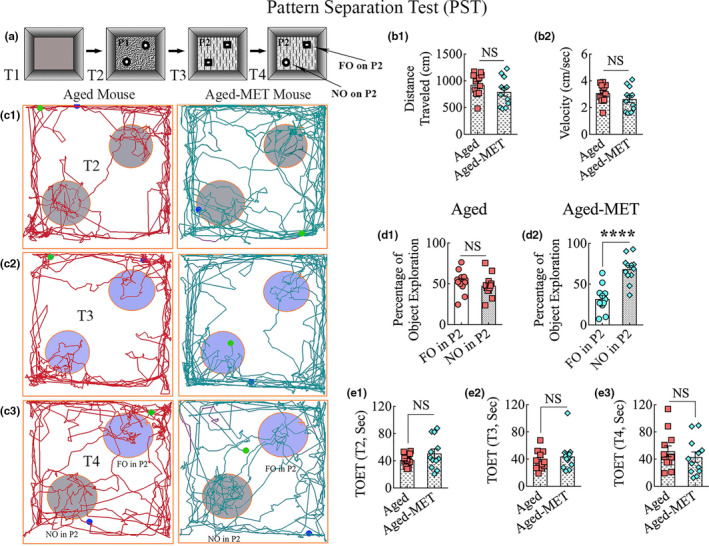Figure 1.

Ten weeks of MET treatment in the late middle age improved ability for pattern separation in old age. The cartoon in a shows the various trials (T1–T4), objects, and floor patterns involved in a pattern separation test. The bar charts in b1 and b2 compare distances traveled (b1) and the velocities of movement (b2) in T1, showing that motor function was comparable between the aged and aged‐MET groups. c1–c3 are tracings illustrating the movement in an open field and the exploration of object areas by an aged mouse (left panels) and an aged‐MET mouse (right panels) in T2–T4. The bar charts in d1 and d2 compare the percentage of exploration of familiar and novel objects on pattern 2 (FO or NO on P2) in T4 by aged mice (d1) and aged‐MET mice (d2). Note that aged‐MET mice displayed a preference for exploring NO on P2 in comparison to aged mice showing no such preference. The bar charts in e1‐e3 compare total object exploration times (TOETs) in T2–T4. ****p < 0.0001; NS, not significant
